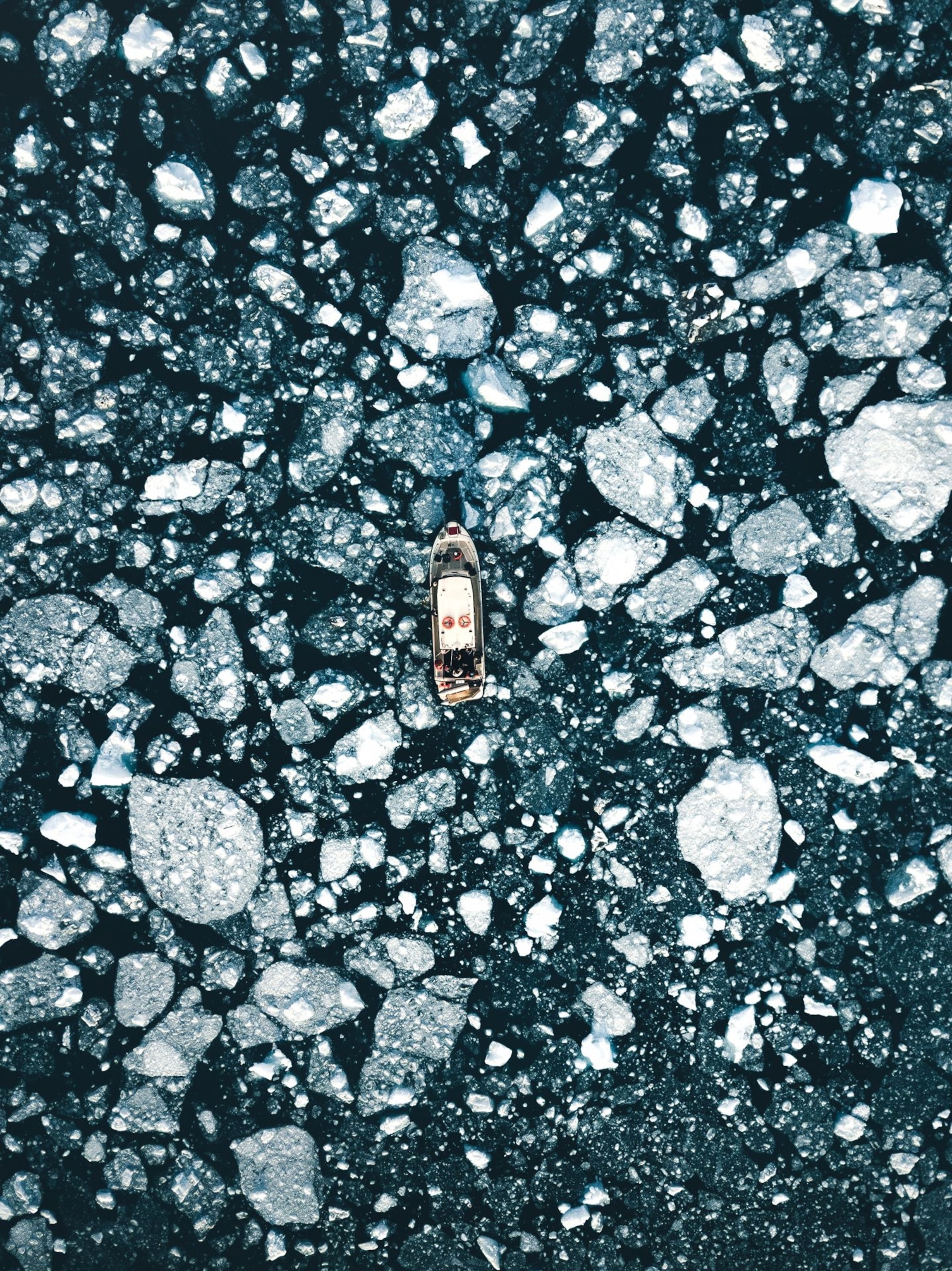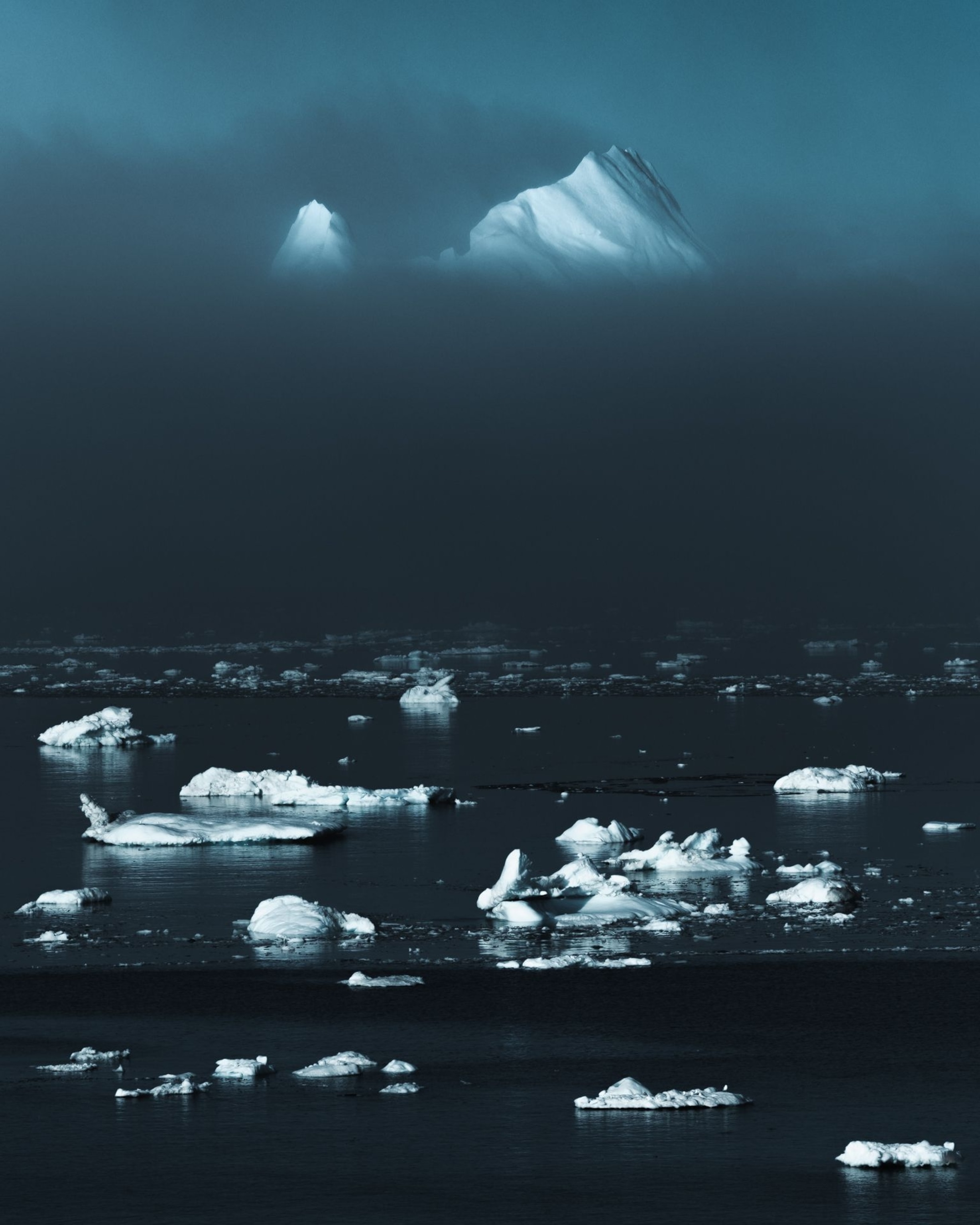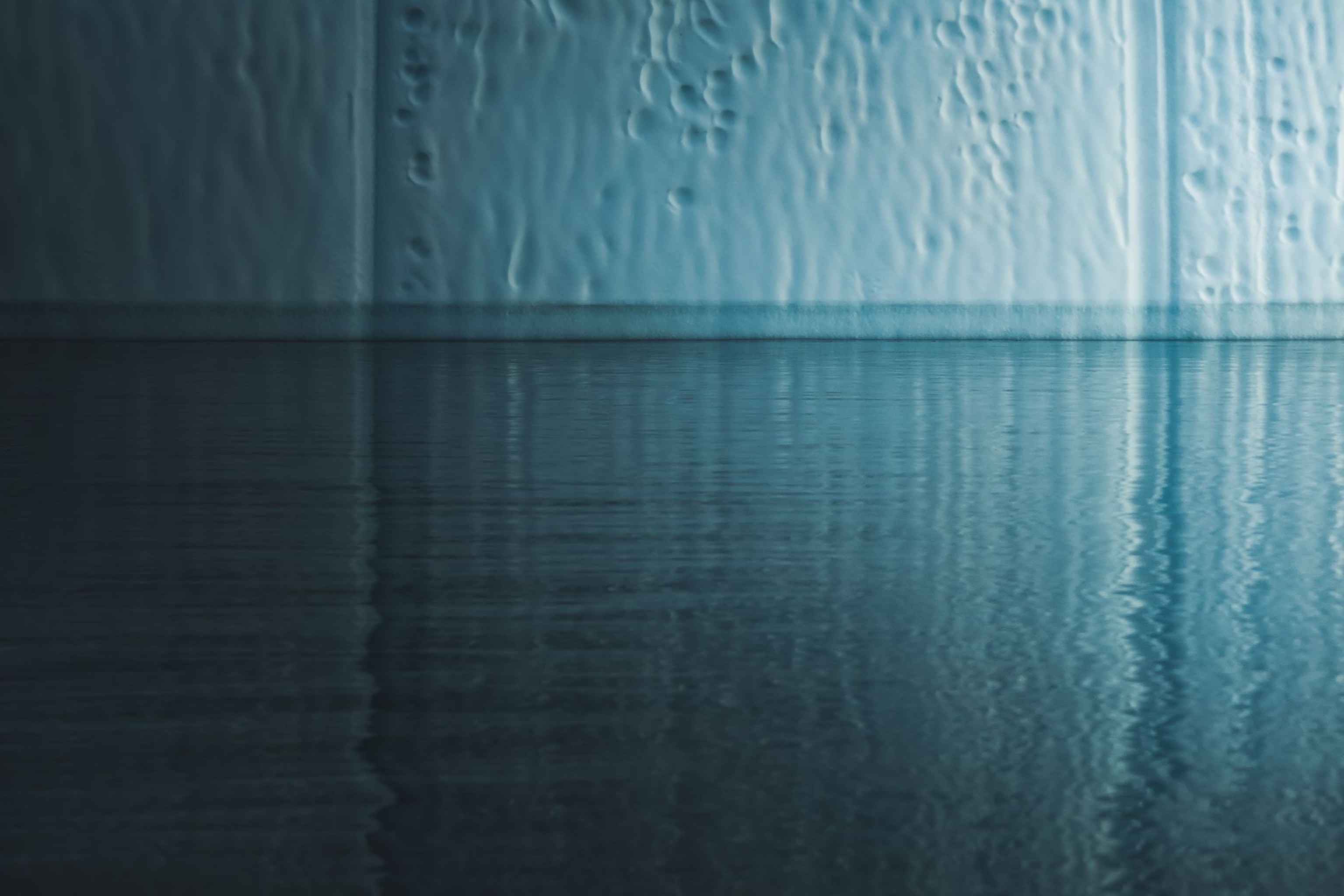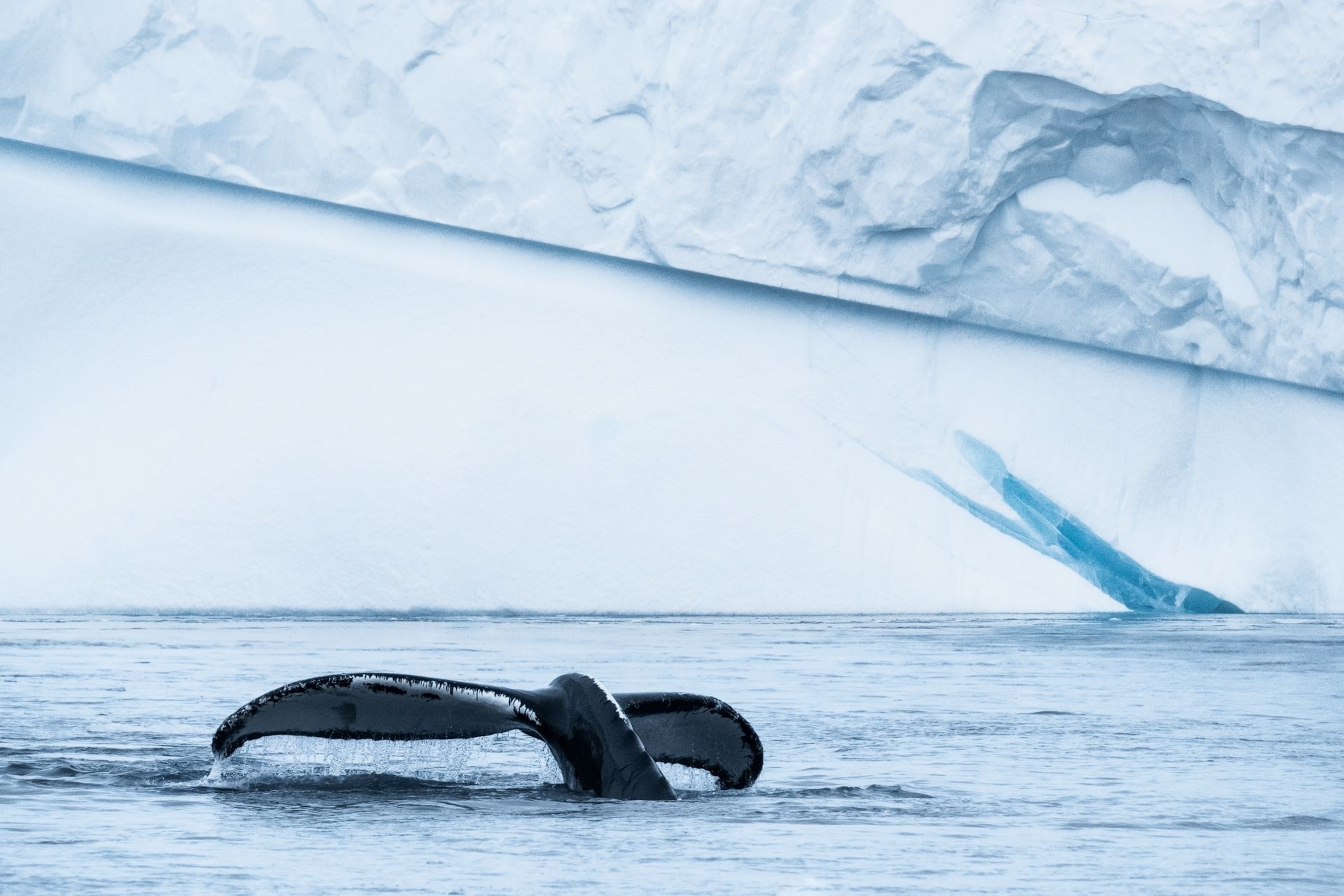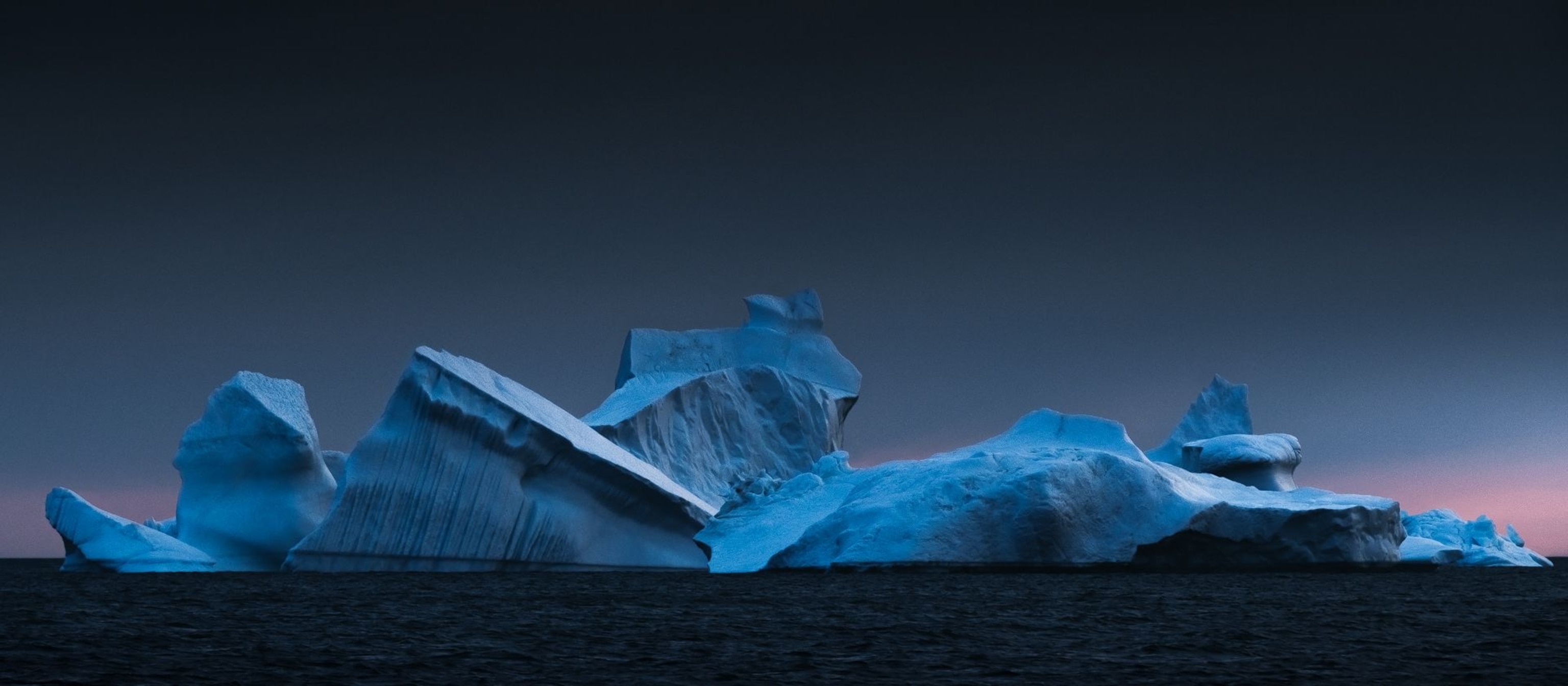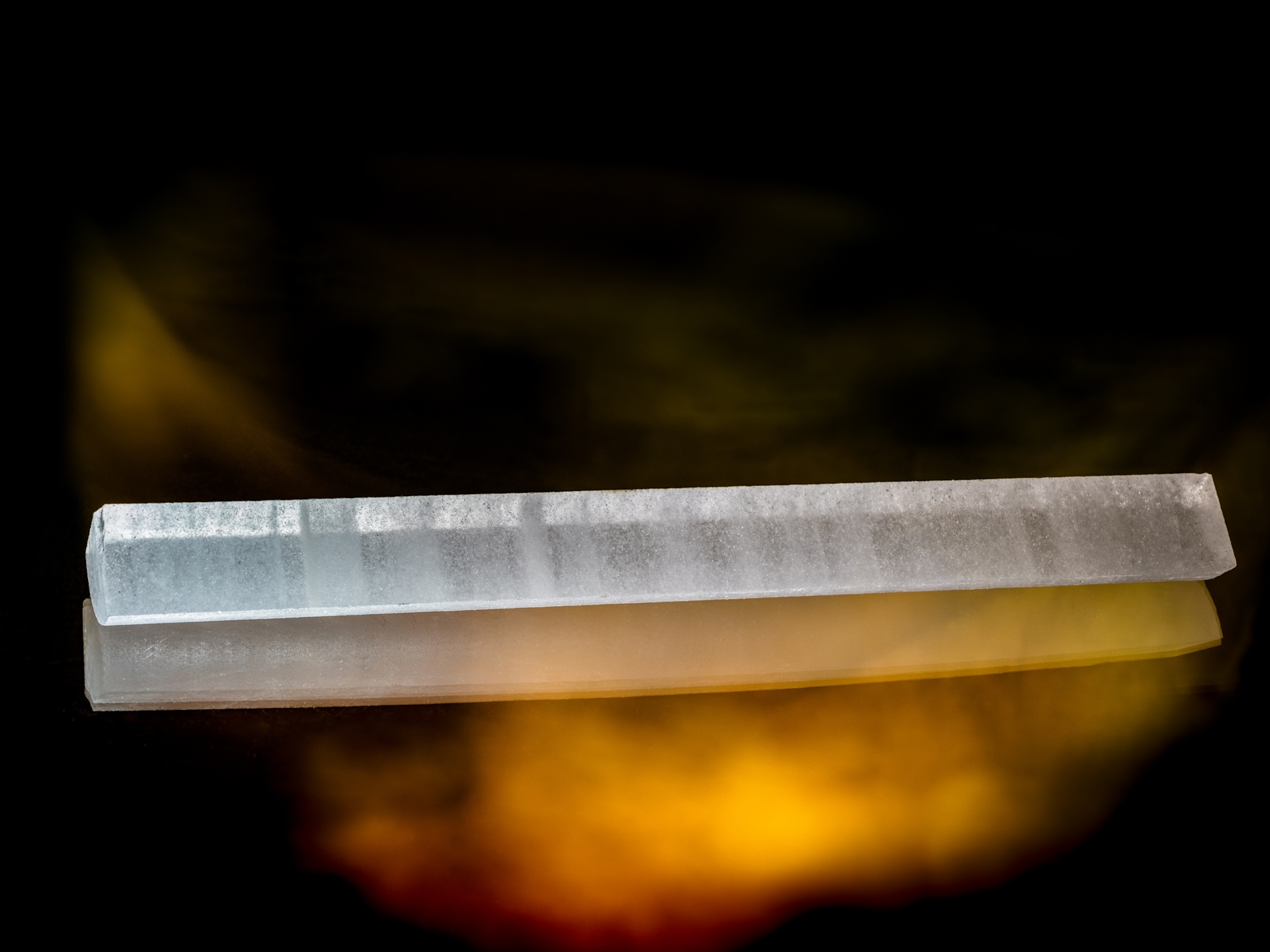A photographic eulogy for Greenland's departing icebergs
Striking photographs capture the life amongst dynamic, statuesque chunks of rapidly melting ice—and an uncertain future.
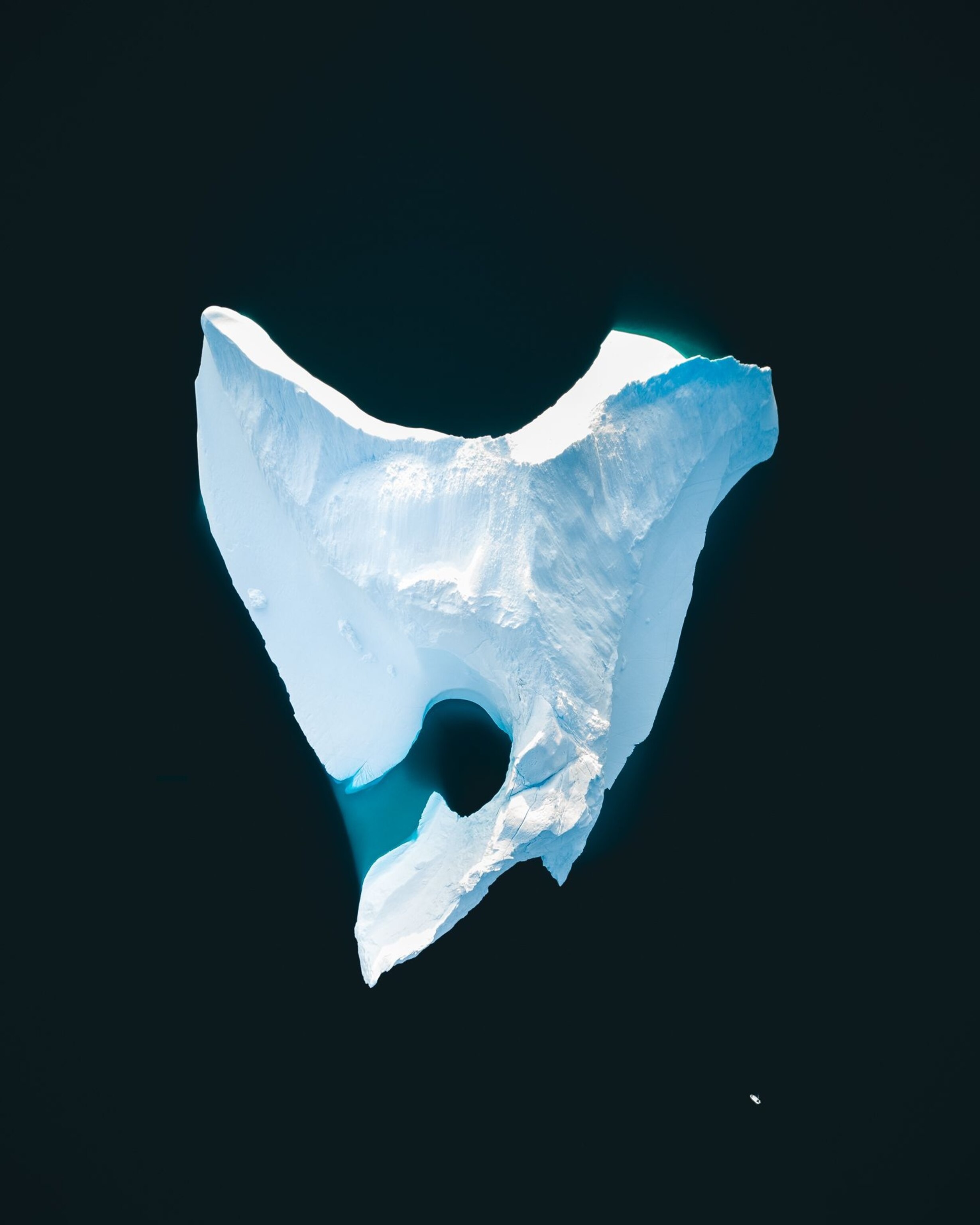
250 kilometres north of the Arctic circle is a place of thunderous and near-constant destruction. Here, creaks and roars signal the shearing of ice columns the size of skyscrapers from south-western Greenland’s Isua and Sermeq Kujalleq glaciers into the waters of the frigid Ilulissat Icefjord. In this UNESCO World Heritage Site icebergs are everywhere: big, small, drifting, tipping, melting, falling. The sea horizon is ragged with blue islands, drifting away into the North Atlantic and every day, tens of kilometres of more ice calves into the dark water to begin its journey into oblivion.
It’s a journey that is getting more crowded every day.
Over three visits to the region in four years, Norwegian photographer Stian Klo’s photography of icebergs and the life around them has become an artistic tribute to a transient—and diminishing—environment. Often captured with fast shutter speeds from a boat jostled by falling ice, or from the perspective of a drone, over time the images developed a vibe that was starkly beautiful, but melancholy. “It certainly took me a couple of visits to really understand it photography-wise.” Klo told National Geographic (UK) over email. “I wanted to try to convey the dynamic play between the obviously beautiful landscape and structures, and this menacing energy of a worrying future.”
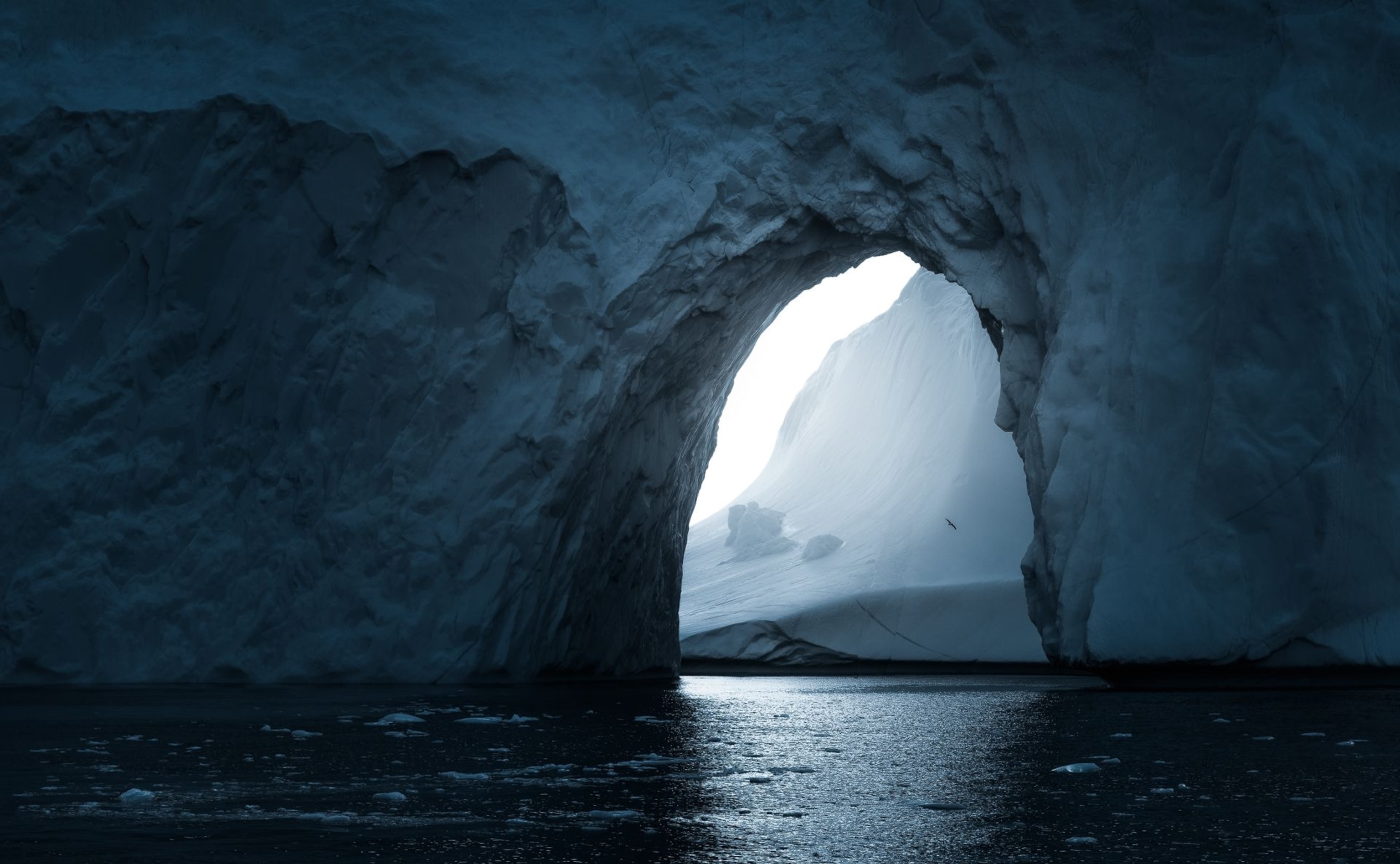
Diminishing wonder
Greenland’s ice is in trouble. Between 2002 and 2016, the colossal island lost approximately 280 billion tons of ice per year both from the icebergs calving off the glaciers, and—more unusually—melting from the land-fast ice shelf. A recent study showed the rate of melting in 2012 to be four times that of 2003. Many scientists believe changes in the region comprise the most reliable barometer we have for the rate of climate change and that Greenland’s melting is reaching a tipping point that could have huge repercussions on global sea level rise.
Icebergs have been a part of the environment of Greenland’s south-east for as long as humans have been there to see it. Many travel great distances, and can be thousands of years old, beginning life far inland, as snow. It is thought the iceberg that sunk Titanic off the Grand Banks in 1912 was produced by one of these glaciers, reaching its destiny with the doomed liner over 5,000 miles from where it was calved off from its mother ice flow.
Klo says the changes are even evident anecdotally on a local level. “I spoke to several [Greenland] residents genuinely concerned about their future and livelihood. They told me stories about 200m high icebergs when they grew up, and now they are reduced to more than half of that.” He says. “And spring temperatures seem to happen earlier than normal.”
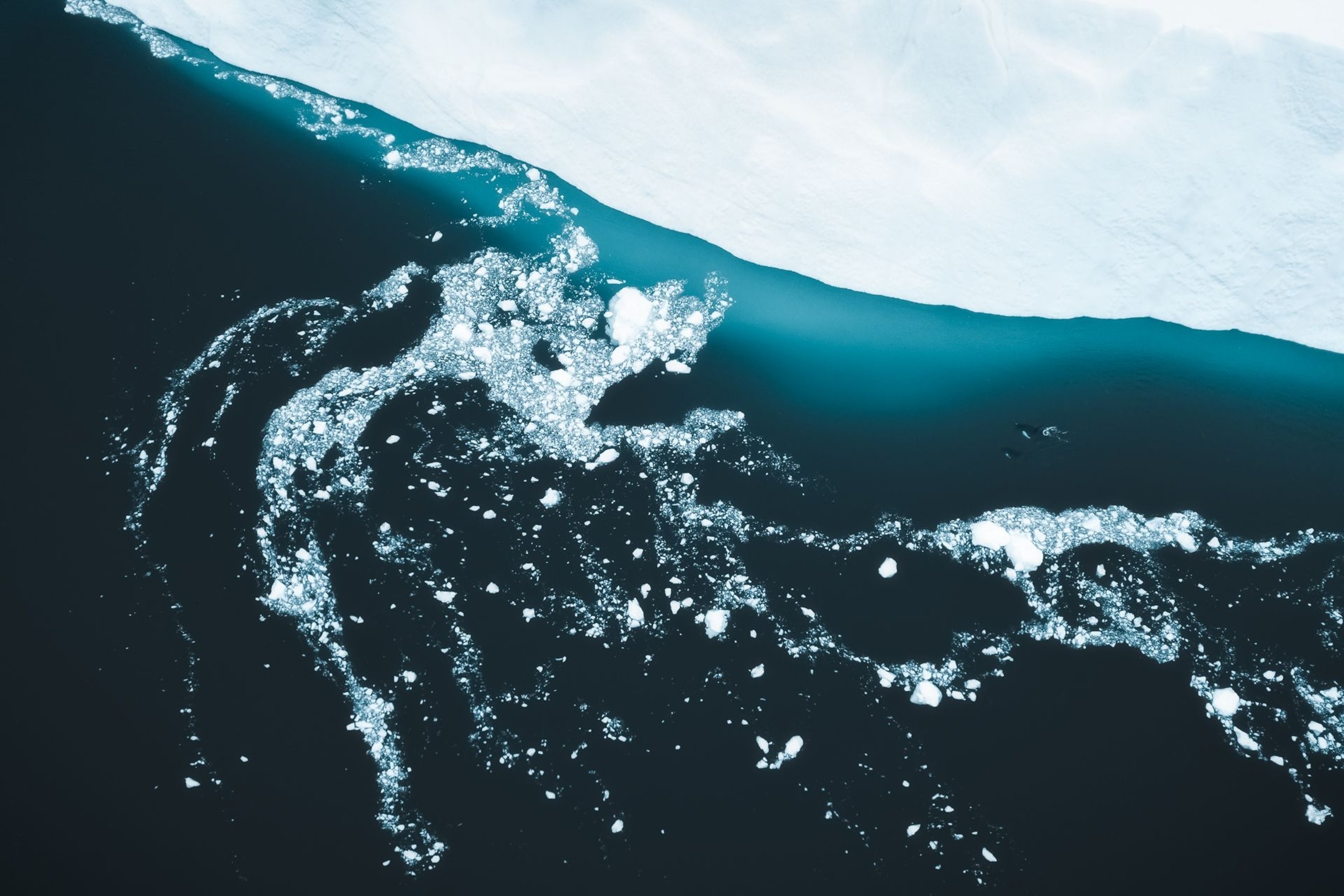
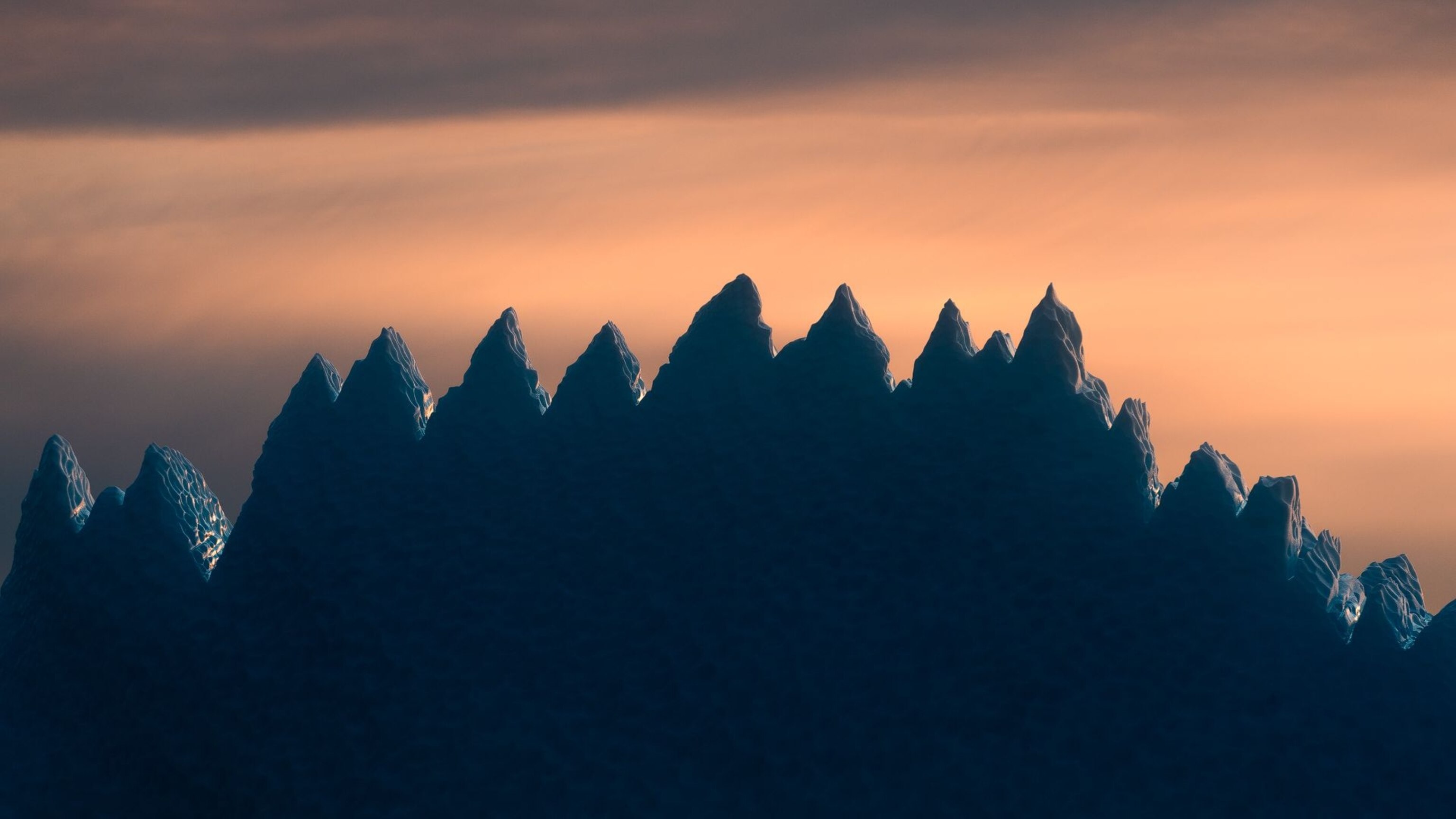
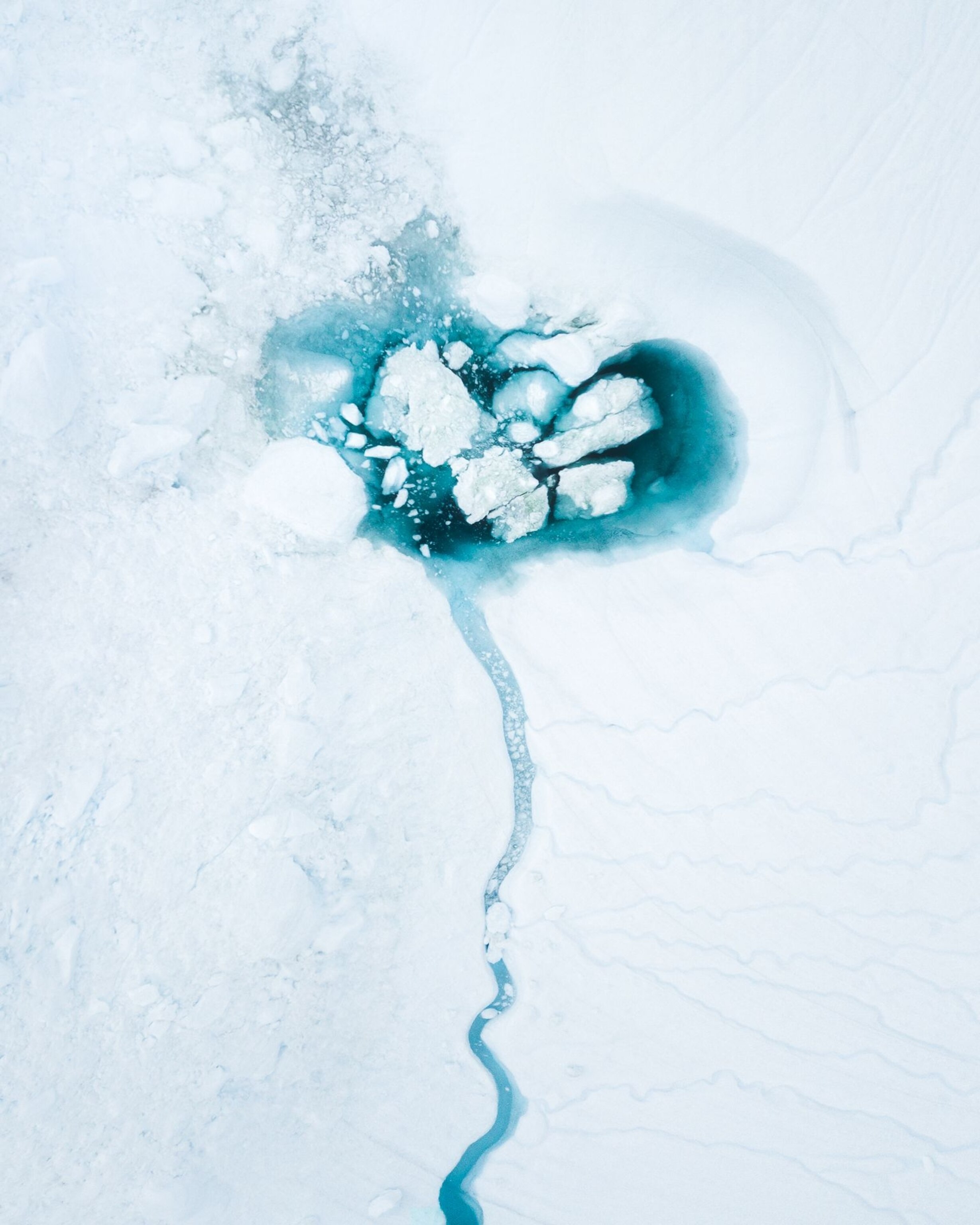
The life within the chaos
Stian Klo says part of his motive with these images was to isolate “the small and somewhat intimate details… the fleeting glimpses of life” amidst the massive and dynamic landscape. Two such images stand out: a lone fulmar flying within the arch of an iceberg, and a humpback whale mother and calf caught accidentally in the corner of a drone shot. “There's something in those two images that really resonates with me.” He says. “They reside in one of most the beautiful regions of the world and are, as far as we know, totally oblivious to the changes happening around them.”
Klo describes “visiting Greenland is a privileged but bittersweet experience.” He adds: “The sheer scale and brute force of nature out there is immense. It's a spectacularly beautiful place, but my mind wanders towards the future and how it will look.”
“I wanted to try to convey the dynamic play between the obviously beautiful landscape and structures, and this menacing energy of a worrying future.”Stian Klo
Once out of the glacier and mobile, many of the icebergs are sculpted into hypnotic patterns and textures. Some become miniature islands, with their own meltwater rivers and lakes. Some sail away on voyages that could take them across oceans. The intentional melancholy and darkness of the imagery reflect the fact that all, however, face the same destiny sooner or later: one that is ever diminishing, until their fresh water becomes one with the saltwater of the sea.
